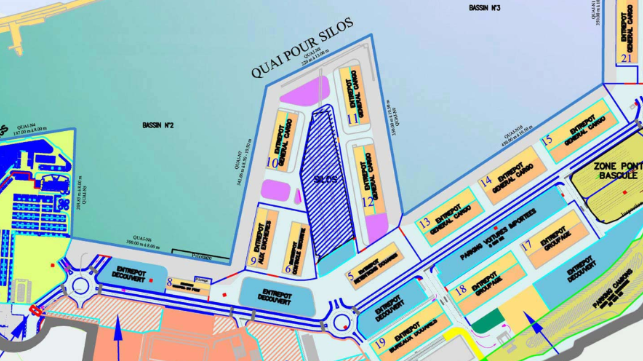130 Dead in Massive Blast at Port of Beirut

A series of two massive blasts at the port of Beirut, Lebanon caused extensive damage Tuesday, leveling multiple buildings and damaging vessels.
Bystander video shows that the both blasts originated in a warehouse complex on the east side of the port's large concrete silo, next to Basin Number 3. After the first blast, a long series of white flashes can be seen at the base of the smoke column, accompanied by popping sounds. The second blast appears to originate from an adjacent warehouse about 30 seconds later.
BREAKING - The explosion in #Beirut, #Lebanon was equivalent to a 4.5 magnitude #earthquake, according to the Jordanian Seismological Observatory - Faytuks
— SV News ???? (@SVNewsAlerts) August 4, 2020
pic.twitter.com/ddM0tojmlU
BREAKING: More than 30 dead, at least 3,000 injured in Beirut explosion, health minister says pic.twitter.com/7CY6jK5YDu
— BNO News (@BNONews) August 4, 2020
Another angle on the Beirut harbor explosions — this one from the sea pic.twitter.com/U2k2zTi3Ew
— Borzou Daragahi ???????? (@borzou) August 4, 2020
Photos of the aftermath show near-complete devastation in the central port area and the adjacent free zone, with toppled and twisted warehouse buildings, damaged shipping containers, burning debris and crumpled cars. The silo - which was directly adjacent to the explosion - shows signs of extensive structural damage, and the side facing the blast appears to have spilled large quantities of grain. The shock wave was powerful enough to cause cosmetic damage at Beirut's airport, six miles away from the port complex, according to Dubai-based news outlet Akhbar.
Based on AIS data, at least four ships - the car carriers Jouri and City of Rome and the freighters Raouf H and Mero Star - may have been moored in the vicinity of the explosion. The extent of any damage to nearby vessels was not immediately clear.
According to Lebanon's customs director and interior minister, a large storage depot of the fertilizer ammonium nitrate was the suspected source of the second (and far larger) explosion. In a social media statement late Tuesday, Lebanese President Michel Aoun said that 2,750 tonnes of ammonium nitrate had been stored at the site continuously for the past six years. Aoun said that keeping a large quantity of explosive material in proximity to downtown Beirut was "unacceptable," and Reuters reported Wednesday that officials responsible for the storage site will be placed under house arrest.
Ammonium nitrate has caused several ultra-large-scale industrial explosions in the past, including the Texas City disaster of 1947 and the Tianjin explosion of 2015.
Human toll
In an update Tuesday night, Lebanon's health minister reported that about 70 people have been confirmed dead, up from 30 earlier in the day. About 2,700 were reported wounded in the blast. [In an update Wednesday, Lebanese officials revised the count upwards to 130 dead and 4,000 wounded.]
A group of firefighters are among the missing. A fire preceded the explosion, and they were on scene in an attempt to control it; they have vanished, according to Beirut governor Marwan Abboud.
The human toll from the casualty is significant, and Lebanon's government has put out a call for blood donations. According to local freelance journalist Abby Sewell, hospitals in east Beirut are so overwhelmed that one facility is treating the wounded in the parking lot.
Another view of the massive explosion in Beirut, Lebanon pic.twitter.com/UM00Ea3qDs
— Ali aljanabi (@Alawaayy) August 4, 2020
The massive explosion that happened earlier in the Lebanese capital, Beirut.
— BadMan Cyph (@SteveCypha) August 4, 2020
Pray for Lebanon. ????
pic.twitter.com/1hR887etKS
#Beirut after the explosion. What a tragedy. It's too much to bear ???? pic.twitter.com/28H4rAodpj
— ???? ??.???? (@beingsuryamadhv) August 4, 2020
Beirut is no stranger to intrigue, terrorist attacks and bombings, but according to maritime security firm Dryad Global, this explosion was likely an accident.
"At this stage, it is likely that this incident is an industrial accident, and does not suggest military or terrorist activity. The presence of naval assets within the area is not indicative of any likelihood of potential targeting by foreign actors. The area surrounding the port location is not a key location associated with incident reporting," Dryad assessed. "The risk to vessels intending to transit to or in the vicinity of Beirut is not immediately escalated as a result of this incident, however on account of the cessation of all operations at the port and potential for chemical contamination, all vessels should avoid."
